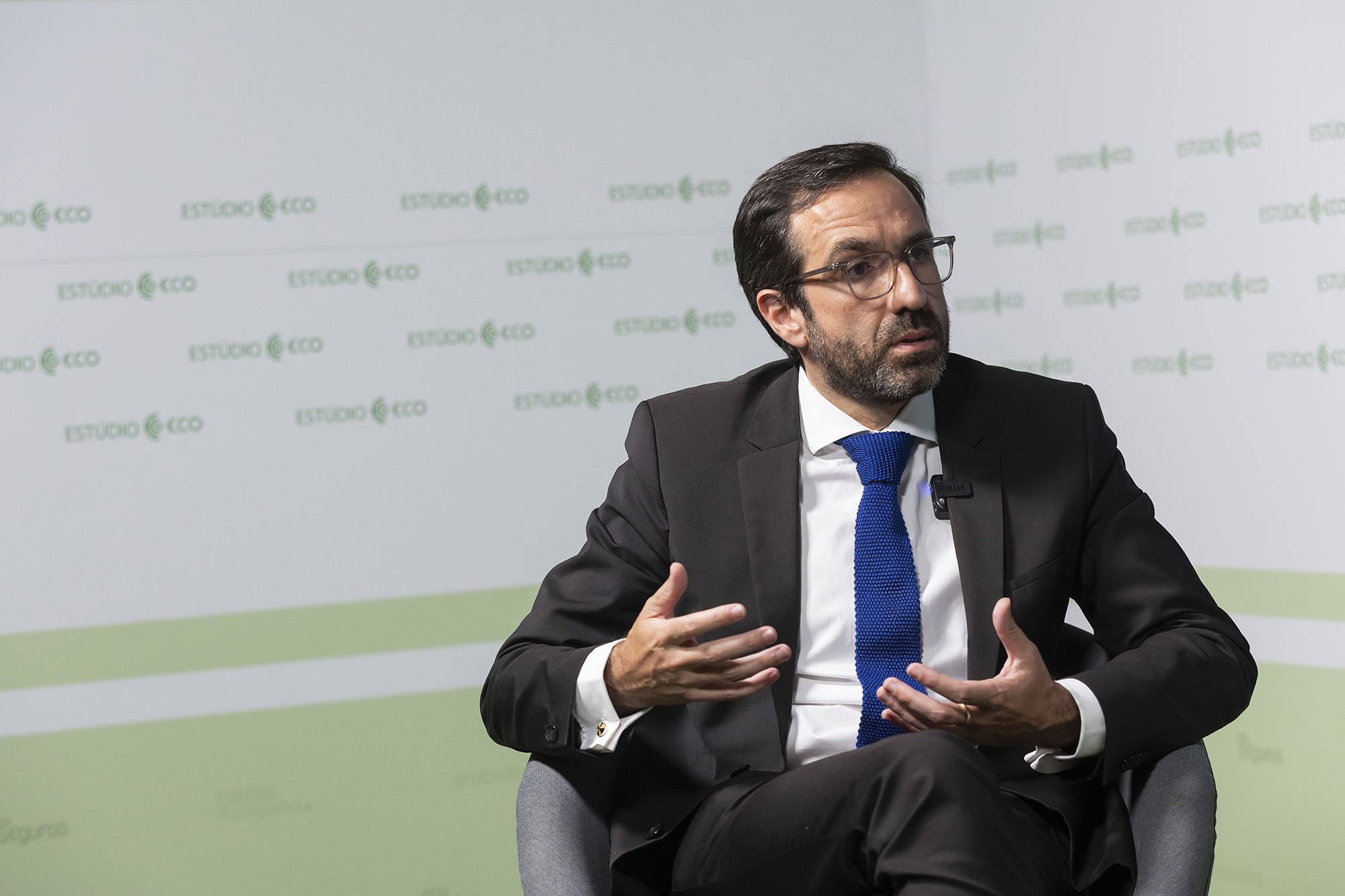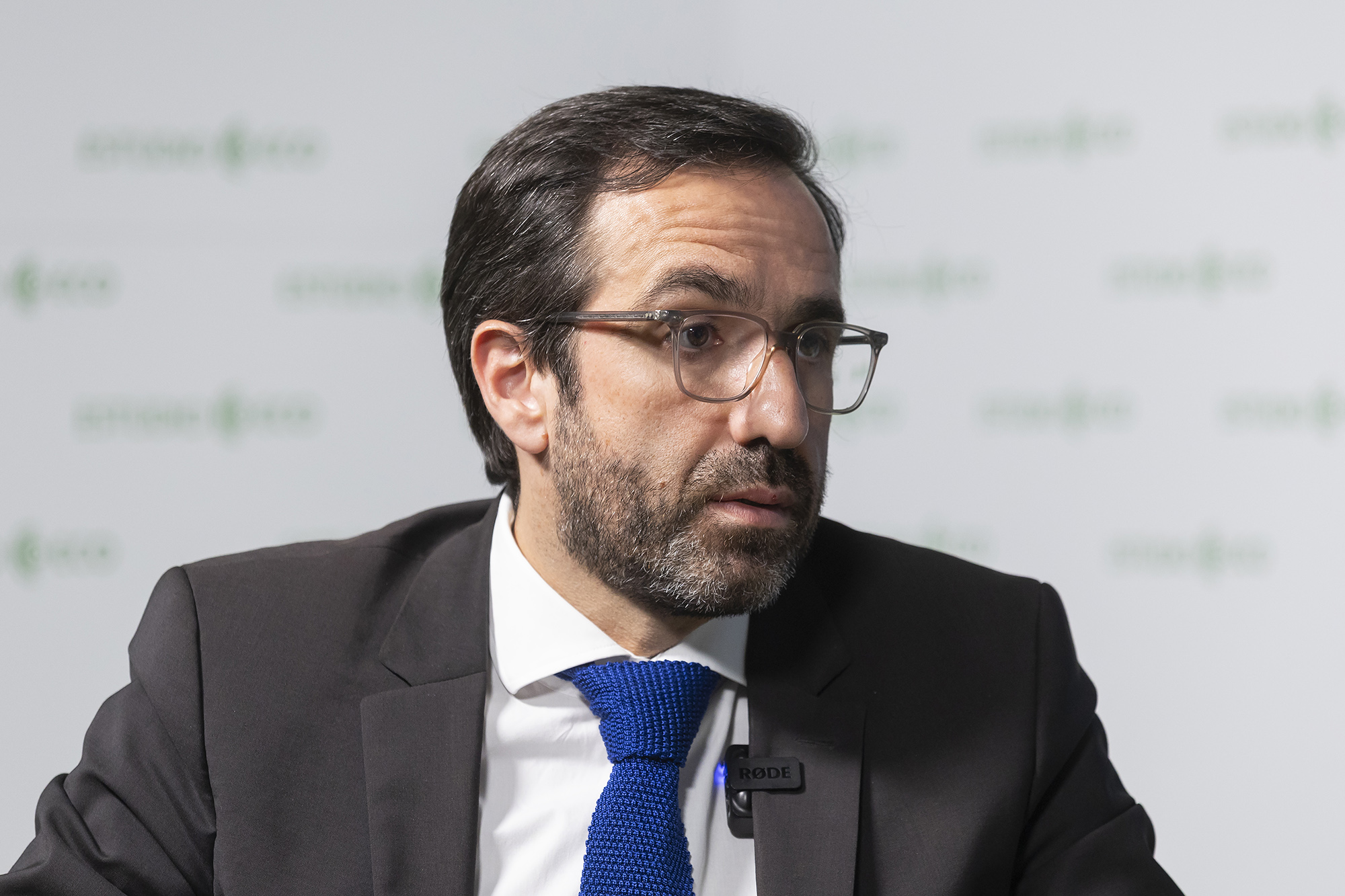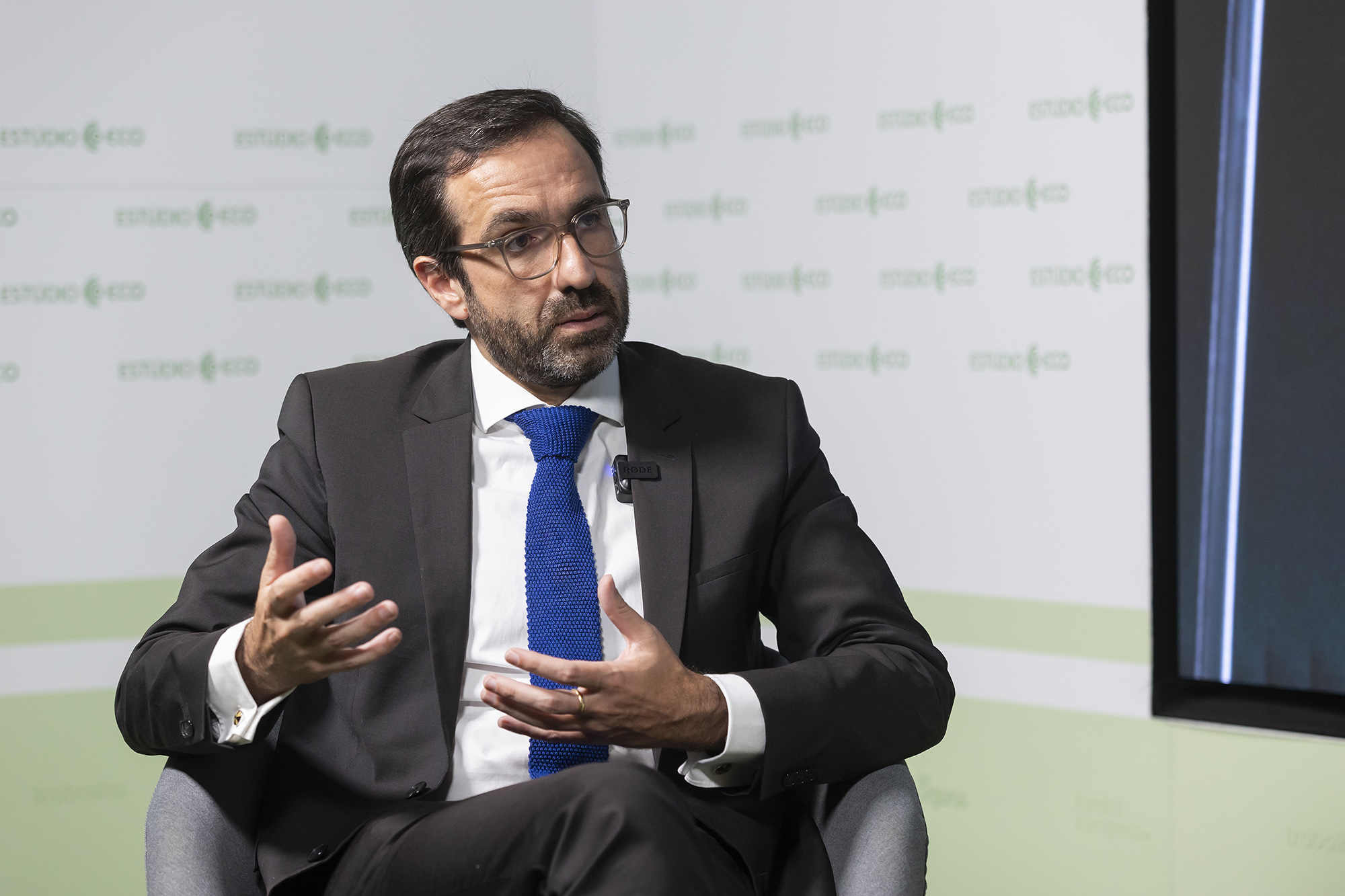Greenvolt multiplies its active energy communities by six. "Growth will be even greater as the public sector opens up," says CEO

Greenvolt's 12 operational energy communities in June 2024 have now grown sixfold. The goal is to reach 120 by the end of the year.
Energy communities, which allow an entity that produces energy with solar panels on its premises to share it with neighboring businesses and families at lower prices, are proliferating across the country.
The CEO of Greenvolt Comunidades, José Queirós de Almeida, said in an interview with ECO/Capital Verde that since the end of last year, the company has almost doubled the number of energy communities it has operating in Portugal, from 37 to 72, compared to just 12 at the end of June 2024 – one-sixth of the current number.
By the end of this year, it expects another 40 to 50 projects to come online, corresponding to 50 megawatts of capacity and a total of up to 120 communities. Thus, the company is expected to end the year with more than three times the number of operational energy communities compared to the same period last year.
He believes that "Portugal probably has the best law in the world for collective self-consumption" , which supports the development of these communities, and applauds a recent effort to digitize processes by the Directorate General of Energy and Geology, which he considers decisive for the growth of this business model.
From now on, he expects that the main driver of energy communities will be the public sector, in which he sees great potential.

It's truly an innovation from a regulatory perspective, more than a technological one. We use solar technology, which is already well-known and mature. It's exactly the same as what exists in an individual self-consumption project. What's different is what we do with this energy.
Self-consumption projects faced the challenge of considering not only the production potential of a given location—the rooftop, the parking lot, or the associated land—but also the consumption of that facility itself. The reality is that consumption fluctuates.
In the typical case of a company, it produces during the week but doesn't work on weekends. Solar production occurs every day. Therefore, anyone considering installing panels to reduce their electricity bill and carbon footprint had to account for this loss of economic value, which would be production that wouldn't be consumed.
This is a suboptimal solution. It's inefficient for the people who have the panels, but also for society as a whole, because there's economic value that wasn't being harnessed.
Often, if it were self-consumption, wouldn't it be economically worthwhile? Is the concept of community necessary to make the investment worthwhile?Indeed, that's it. The big difference [between individual self-consumption and energy communities] is that the energy produced in a given location isn't limited to that location, but can benefit, let's put it in layman's terms, the neighbors. And that's very important, right from the start, for those implementing the project.
You'll learn that not only can you consume and have cheaper and cleaner energy in your facilities, but you also know that when you don't need it, you can share that energy with your neighbors and also benefit from that sharing.

Greenvolt Communities' typical first step in this business is finding someone who can produce. To share, we first need to produce. We look for spaces where it's possible to produce energy for entities, whether companies, schools, sports facilities, etc.
And then, once we've determined that one of those exists, and an estimate of what will be generated in terms of surplus—that is, what that location won't consume—gives us an idea of the energy that can be shared. From there, we, Greenvolt in this case, look for these consumers available to receive.
Who are these consumers? They could be families or businesses within this radius [of kilometers, predefined by law, which can be up to 20 kilometers]. It's crucial for a just transition. We're saying we'll be able to share energy with families and businesses that otherwise wouldn't have solar panels.
Can you quantify the benefits for each of the stakeholders, therefore, both the producer and the neighbors and even Greenvolt itself?Starting with the production side. Here, typically, one of two situations can occur. If the client wants to invest in the infrastructure and community development, we design the project, the client invests, and we manage not only the solar installation but also the community itself .
Here, we have a service model, if you will, in which the invested client also decides everything regarding the community, including the price at which they share energy with their neighbors. We create the community and manage it according to the client's instructions.
But is this price set in some way to ensure that it is of interest to the neighbors, and that communities do not cease to exist?Consumers only agree to participate if they receive a benefit: a savings compared to what they would otherwise pay their supplier. Typically, we're talking about a 20% to 30% discount on these consumers' tariffs . This is a benefit of any type of investment, with no upfront costs and freedom to enter and exit.
In the case of investment, the customer obviously doesn't pay for the energy they produce or consume. They made the initial investment and will receive revenue from sharing energy with their community—there you have it, through our management.
The other model, which in our case represents over 90% of our 160 projects, is with investment from Greenvolt. In this case, Greenvolt makes the initial investment, so we handle everything: we install, create, and manage the community. The consumer will pay for the energy the panels produce, which they consume, and this price is significantly lower than what they pay to a retailer . In these cases, we're talking about savings that can reach 60% to 70%.
And the average would be…?Our average is around 50%, between 50% and 60%. Why? Because we're talking about energy that the customer will consume in their own facility, and therefore, it's the cheapest energy available. For consumers, it's very similar to the other situation: we guarantee a discount of between 20% and 30%.
The great advantage of this model is that we take the risk. Customers know they have a fixed price, so all risks related to energy volume are assumed by Greenvolt.

José Queirós de Almeida, leader of Greenvolt's energy communities, in an interview with ECO/Capital Verde Hugo Amaral/ECO 
José Queirós de Almeida, leader of Greenvolt's energy communities, in an interview with ECO/Capital Verde Hugo Amaral/ECO 
José Queirós de Almeida, leader of Greenvolt's energy communities, in an interview with ECO/Capital Verde Hugo Amaral/ECO
Installing solar panels in parking lots is significantly more expensive than installing them on rooftops. The payback period will also vary depending on the infrastructure, cables, etc. We could be talking about anywhere from 3 to 7 or 8 years , when the client makes the investment.
What has Greenvolt Communities contributed to the Greenvolt group?We're still very small. We're currently in our third year of operation, but our growth has been significant. We currently have 72 community energy projects operating, with 30 megawatts of installed capacity. We typically have larger clients, because that's how we can achieve greater benefits for everyone, with more families benefiting as consumers.
This happened recently: the Directorate-General for Energy made a major investment in digitalizing licensing. It was something not only done from scratch, but also without comparable experience in other European countries. We were the first country to invest in this approach.
The licensing platform became stable between September and October of last year and is still undergoing new developments, but the initial registration has already reached a level of stability that I find very interesting. It allowed us to go from perhaps 10 to 12 projects in the middle of last year to 72 now. And we have over 160 in the pipeline. Many of them will become active this year.
But was the main unlocker this platform?Without a doubt. This is a business model issue: in terms of technology, things are very similar to any other self-consumption installation project, so the licensing issue is what differs. When we're talking about licensing here, it's a process that must take into account the specificities of collective self-consumption.

To date, we've already invested over €30 million. This is one of our strengths, thanks to our shareholders at the time and now to KKR. These are projects that take time; there's an intensive investment involved, with a long payback period. That's where the financial aspect is crucial in our projects.
The 30 million has been raised since the inception of Greenvolt Communities. How much do you plan to invest by the end of the year?By the end of the year, in terms of activations, we want to reach close to 50 megawatts.
This year, 30 megawatts are operational. We have another 160 projects, meaning we have another 60 megawatts in various stages of activation, and by the end of the year, in terms of activations, we want to reach close to 50 megawatts .
Obviously, in terms of investment, we're probably talking about the same size, because there's a lag between investment and entry into operation, but that will be our goal and we're confident we can get there.
There is always a natural inertia towards what is new and, therefore, it accelerates as the consumer becomes more familiar with what collective self-consumption, energy communities, and energy sharing are all about.
Looking precisely at this question of the potential that still exists: what are your goals for 2030? Do you have anything defined in terms of megawatts, investment, or number of communities?We're in the process of defining this. We're ambitious and believe we have the necessary conditions to grow as quickly as possible because the benefits are real. We also need a partner like KKR, as one of the key resources needed for this to happen is financing.
We have no reason not to grow, and grow at a faster pace. We see that things are accelerating immensely in the private sector. And I believe growth will be even greater as the public sector opens up and begins to address collective self-consumption and energy communities more effectively .
Obviously, the public sector has its own procurement processes, namely the public procurement code. It's challenging to adapt to a new legal framework, which is collective self-consumption. The first tenders are beginning to appear, especially at the municipal level.
The most paradigmatic case is that of educational institutions . We currently have around 30 educational projects, including universities, daycare centers, and private schools, most of which are operational. We believe this is obviously a fantastic opportunity for the government sector , where we have over 2,000 schools or educational institutions in the country, all of them in urban centers, typically with excellent conditions for installing solar panels. The overwhelming majority.
Especially given the problem of individual self-consumption, especially surpluses during vacation periods, this model can solve. When all the country's schools, all the country's sports facilities, and all the existing buildings at both the central and local government levels are included, I think the market has significant growth potential for this business model.
It's a way for the state itself to save on its electricity bills, benefiting communities, without needing to invest. This social mission, of course, makes sense in the private sector, but in the public sector, it seems even more significant to us. Especially at a time when we have to make important decisions regarding the State Budget, finding and channeling resources to the social and defense sectors.
But do you notice this openness on the part of the State? Do you think that this State budget might already have some provision for reducing student bills in this way?I expect that we will also see growth in the public sector that is very similar to the private sector, if not even greater, in terms of size.
I hope so. Now, returning to reality, the first competitions are starting to emerge, and knowledge is also beginning to emerge, which is always very important. I expect that we will also see growth in the public sector very similar to the private sector, if not even greater, in terms of scale .
But has there been contact with the Government and local administrations that could give you some clue as to whether there is openness or, on the contrary, whether some inertia might be intervening?What really encourages me is that, in a time of so much discord, this is a topic that unites. Even with changes in governments of different political persuasions, it's clear that everyone sees the benefits. In fact, it should even fill us with pride as Portuguese people and as citizens.
In this case, innovation resulted from regulation. And it doesn't just work in Portugal. The Commission itself was inspired [by the Portuguese model] to create a specific provision in the Renewable Energy Directive , approved in early 2024, which enshrines a model heavily inspired by Portugal that must be implemented throughout Europe by July 2026.

In terms of growth, we face a challenge that I would say is typical of our model, which is still relatively new, in a field that is always quite technical—electricity—and one where we know people always have many questions. Electricity bills continue to be a challenge for businesses and families.
We probably have the best law in the world for collective self-consumption, proof of which is that the European Union itself was inspired by it.
Then, I think it's really about improving all processes, both internal and external. We probably have the best law in the world for collective self-consumption, as evidenced by the fact that the European Union itself was inspired by it.
Now, in all laws, implementation is very important, and therefore, we welcome and strongly emphasize the investment that governments and this government is making in providing the digitalization platform.
All the developments planned for this year to make the platform fully functional are welcome and I'm sure they will be even more beneficial. And so will the increased public funding.
In Portugal, the legislation is even more favorable than abroad. What are your prospects abroad?Greenvolt, in the utility-scale renewables segments of wind, solar, and batteries, as well as in the decentralized sector, already operates in many geographies, from 14 to 16. We are already developing solutions that are permitted in all these markets. We have this expertise in Portugal and export it to other markets, for our teams and for other companies in the group to develop.
And the good news is that this model is actually beginning to have legislation and conditions in several countries, where we are also now taking the first steps, therefore behind Portugal.
Do you have a target number or target for the installed capacity you expect to have abroad in terms of energy communities for this year or the next?This will be a number to determine, especially this year, in our planning and budgeting process. Now, this number is heavily influenced by regulatory issues. Providing abstract numbers at this stage is a bit of a crystal ball exercise.
But at what level are they out there?We already have a lot of individual self-consumption, so we're taking the first steps in the communities. We already have initial projects, but I would describe them as pilots. We know that countries are developing them at least until July 2026. But we've seen signals from various countries and from regulators, who sometimes also ask us for information.
ECO-Economia Online





